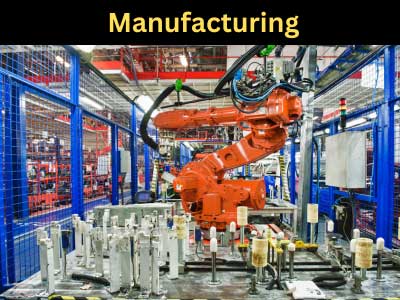Key Takeaway
Additive manufacturing includes several types, each with its own applications. Stereolithography (SLA) uses a laser to harden liquid resin into solid parts, ideal for highly detailed prototypes. Fused Deposition Modeling (FDM) melts plastic and builds objects layer by layer, commonly used for simple, cost-effective parts.
Selective Laser Sintering (SLS) uses a laser to fuse powdered material, creating strong components, while Direct Metal Laser Sintering (DMLS) does the same with metal. Binder Jetting bonds powder layers using a binding agent, allowing for intricate designs. Each method serves different industrial needs based on material and complexity.
Overview of the Seven Main Types of Additive Manufacturing
There are seven primary types of additive manufacturing, according to the ASTM (American Society for Testing and Materials) classification. These processes use various materials and methods to create objects. The seven types are:
Vat Photopolymerization
Material Jetting
Binder Jetting
Powder Bed Fusion
Sheet Lamination
Directed Energy Deposition (DED)
Extrusion (Fused Deposition Modeling, or FDM)
Each process has its own strengths and limitations, with some suited for high-resolution prototypes, while others are designed for large-scale production or metal part manufacturing. Understanding the characteristics of these processes is critical when choosing the right method for your project.

Vat Photopolymerization: Process and Applications
Vat Photopolymerization is a process that uses a liquid photopolymer resin and a light source, typically a laser or UV light, to cure and solidify each layer. The most well-known method in this category is Stereolithography (SLA). In SLA, the liquid resin is stored in a vat, and the laser cures the resin, layer by layer, to form the desired object.
This process is renowned for its high resolution and smooth surface finishes, making it ideal for industries like dentistry, jewelry, and medical devices, where precision is crucial. Vat photopolymerization is used to create dental aligners, hearing aids, and prototype models with fine details. However, the process typically requires post-processing, such as cleaning and curing, to fully harden the parts.
One limitation of vat photopolymerization is that the materials (usually resins) may not be as durable as other types of additive manufacturing materials, but its ability to create intricate and accurate designs is unmatched.
Material Jetting: A Detailed Insight
Material Jetting works similarly to an inkjet printer but instead of ink, it jets photopolymers or other materials to build an object layer by layer. Each layer is immediately cured using UV light. One of the major advantages of material jetting is its ability to create high-resolution parts with multiple materials and colors in a single print.
This process is commonly used for creating prototypes, casting patterns, and parts requiring high detail and smooth finishes. Material jetting is widely employed in industries such as consumer electronics, medical devices, and architecture for models and prototypes that closely resemble the final product.
Despite its precision, material jetting can be costly, especially when using specialized materials. The process is slower compared to other types of additive manufacturing, and it’s often used for small-scale production due to the cost and time required.
Powder Bed Fusion: Key Technologies and Uses
Powder Bed Fusion (PBF) is one of the most versatile and widely used methods in additive manufacturing. It uses a laser or electron beam to selectively fuse powdered material—whether metal, plastic, or ceramics—layer by layer. The most common technologies in this category include Selective Laser Sintering (SLS) and Direct Metal Laser Sintering (DMLS).
Powder bed fusion is ideal for creating parts with complex geometries, such as aerospace components, medical implants, and automotive parts. Its strength lies in its ability to print functional, end-use parts with strong mechanical properties. For example, DMLS is widely used in aerospace to print turbine blades and other metal parts that must withstand high temperatures and stress.
However, post-processing is often required for powder bed fusion parts, particularly in the case of metals, where further treatments like heat treatment or polishing may be necessary to meet performance standards.
Directed Energy Deposition and Its Impact on Large-Scale Manufacturing
Directed Energy Deposition (DED) is another key type of additive manufacturing that is mostly used for metal parts. In DED, a laser, electron beam, or plasma arc is used to melt material—usually metal wire or powder—as it is deposited. The material is applied layer by layer, allowing engineers to build parts or repair existing components.
DED is unique in that it can be used to produce large parts or repair existing metal components in sectors like aerospace, oil and gas, and defense. For example, it’s commonly used to repair turbine blades or large industrial components that are expensive to replace.
One of the major benefits of DED is its ability to add material to an existing object, which makes it ideal for repairs and modifications. However, DED lacks the high resolution of processes like SLA or SLS, which is why it’s typically used for functional, large-scale applications where surface finish is less critical.
Conclusion
With seven primary types of additive manufacturing available, choosing the right one depends on your specific needs, such as material, part complexity, production volume, and budget. Each technology offers distinct advantages, from the precision of vat photopolymerization to the large-scale capabilities of DED. As an engineer, understanding the strengths and limitations of each process will help you make informed decisions, ensuring that your design and production needs are met with the highest efficiency and quality.
Whether you are working on prototyping, custom manufacturing, or high-performance parts, additive manufacturing continues to provide unprecedented flexibility and design freedom across a range of industries. By selecting the right process, you can push the boundaries of what’s possible in modern manufacturing.
